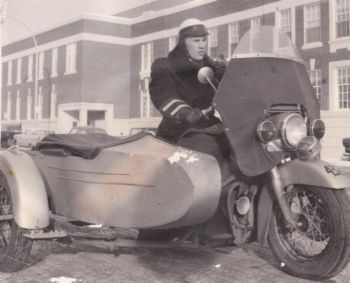|
|
Edmonton City Police Recruit Class #10
|
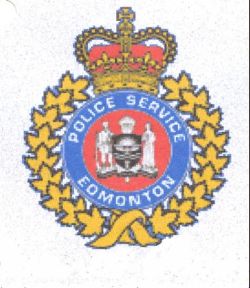 |
|
 |
|
|
|
|
|
|
GRADUATION DAY DECEMBER 5 1959 |
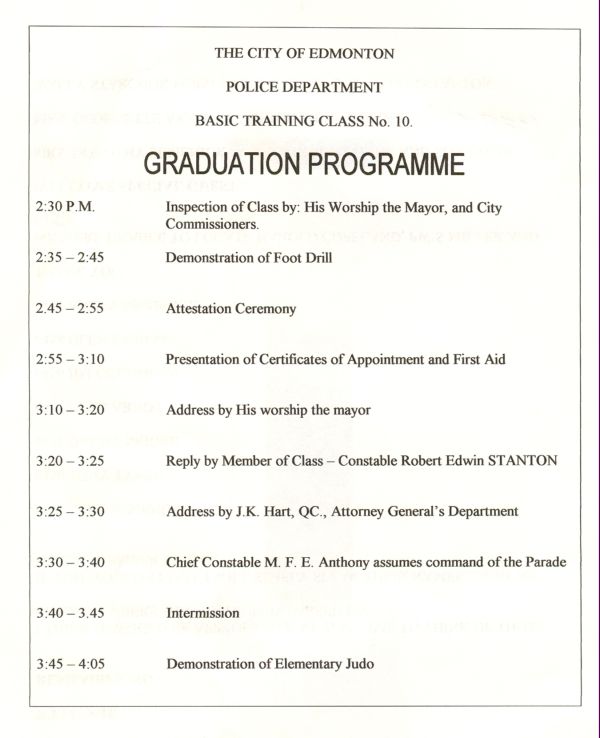 |
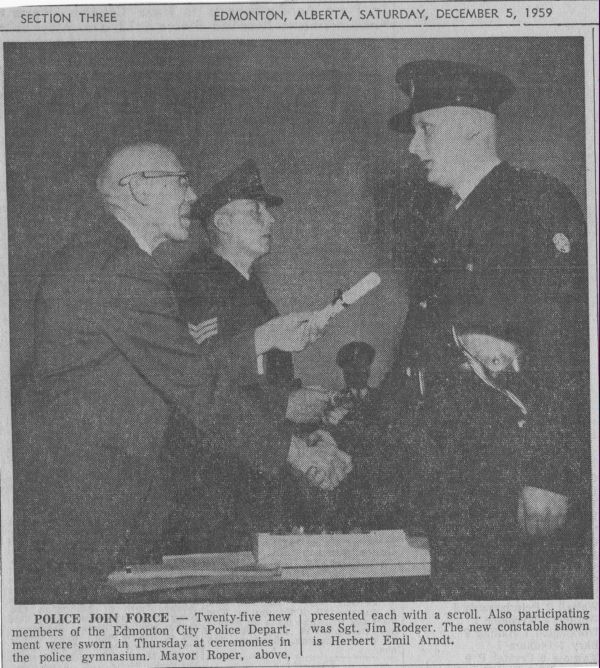 |
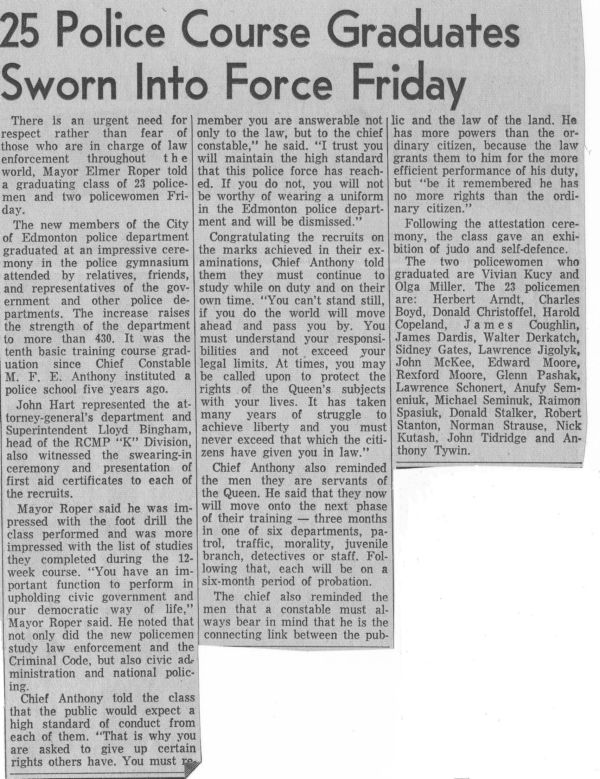 |
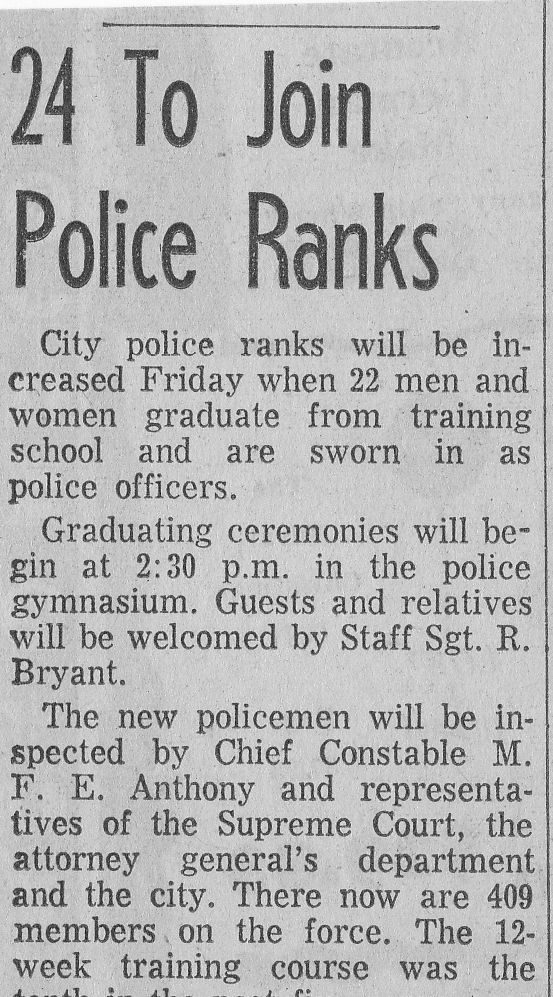 |
|
Missing from the article:was the tenth in the past five years. |
|
|
|
WALKING THE BEAT
|
|
In April 2017 this following conversation took place: Sunday April 2, 2017 From Cory Zee: Reg #871 then 385, Class 24. One Beat was overlooked altogether, that being Beat 24 along Stony Plain Rd, from 149 street to 156 street, both sides. After Parade on midnights one would have to catch the last trolley. Hello Cory, Thanks for the info. However when Class 10 was trained the location you gave was part Jasper Place! I shall however update my site! Be safe! 195 Hi John, you are correct, what about George Van Dyke, the original Calder member, that was a beat as well ( not sure the number), when did they join the city that was along 129 ave 113-127 st. Cheers...Blessings CZ Hello CZ Calder was going strong when I left in 1978...I think!!! But I forget the number, I will look at my page and come up with it [21] it was and it was a lonely beat... Jasper Place and Beverley joined the city in the early sixties! I tried to find a fish but could not...you will either know what I mean or think I'm crazy! Cheers and blessings to you as well... John T
|
|
EATING PLACES
444
|
|
D. R. J. STALKER Register Number 445 DON'S NOTE BOOK FOR CLASS No. 10 [amended to fit this site] |
| INDEX |
|
Police Chiefs |
Organization of the Police Department |
How to take Notes |
How to Study |
|
Policing in Canada |
Criminal Law |
Evidence |
How Laws are made |
| More Criminal Law | Criminal Code | Arrests | Small Arms |
| Hand Cuffs | Baton & Whistle | Gas | Searching & Unarming |
|
Indiscriminate Use of Fire Arms |
Traffic | Traffic Reports | Accident Investigations |
| Report Forms | Stolen cars & Miscellaneous Items | Second Hand Stores | Locks & Keys |
| Fingerprinting/Crime Investigation | Police Procedures | Crime Index |
|
CITY POLICE POLICE CHIEFS |
|
|
|
|
|
|
|
|
|
| CRIMINAL INVESTIGATION | Information concerning Criminals, stolen property,& warrants |
OPERATIONS |
| Inspector Cookson | CENTRAL REGISTRY |
Patrol |
| Inspector Stevenson | All submitted reports are kept here |
Traffic |
|
1. Morality |
How many crimes | Criminal Investigations |
| 2. Juvenile Offenders | IDENTIFICATION | Senior Inspector |
| 3. Criminal Investigations | Photographs & fingerprints | Watch Inspector |
|
STAFF |
Supt. Kingzett | Staff Sergeant at the desk |
| Jail Section |
Personnel |
Patrol Sergeants |
| Summons & Court |
Recruiting |
THREE SHIFTS |
|
Orderly Room |
Training School |
12 to 8 a.m. |
| Lost & Found | Records & Accounting |
8 a.m. to 4.00 p.m. |
|
Quartermaster |
Orderly Room |
4.00 p.m.- 12 |
|
Accounting |
TRAFFIC INSPECTORS | |
|
Pay Roll |
Inspector Moore | |
|
Inspector Langford |
||
|
|
|
|
|
|
|
|
|
|
|
|
|
RECORD OF WRITTEN LAW
|
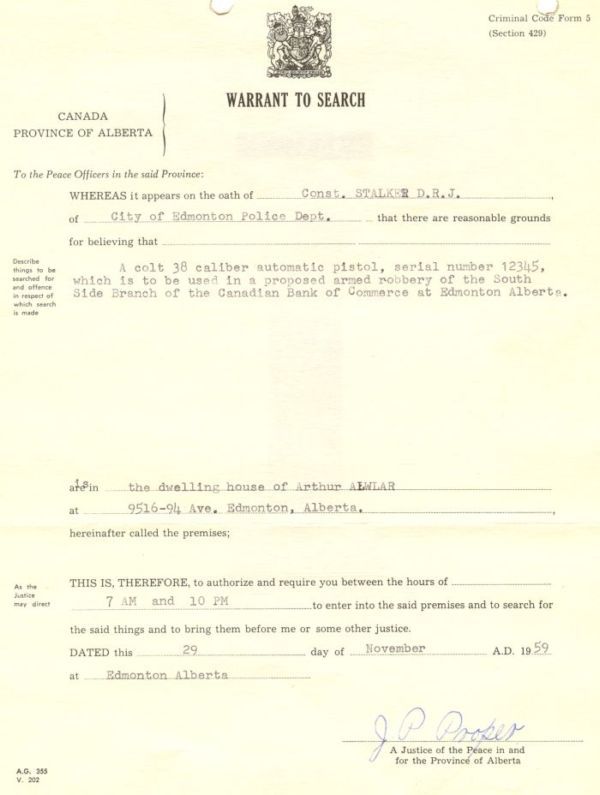 |
 |
|
|
|
CRIMINAL CODE 26 Parts. Each part is separate unto itself, yet is together. Each part has its own function in the enforcement. C.C. Chapter 51, 2-3 Elizabeth II Part 1 General. Part II Treason. Sec. 48 within 3 years. Minors. Sec. 86. ..............Sec. 88. Seizure of firearms:They must go to the Attorney General. Reports. Call all weapons by their right name. Permit. Allows you to do something. Registration. Certifies that you have complied with law. Part III Corruption and disobedience. Bribery 100,101,107. 110 Obstructing a peace officer. 112 False evidence. 127 Escape. 160 He did cause a disturbance in such and such a place by impeding or molesting. 230 Assault. Part VII
268 Break. 269 Theft. 288 Robbery 292 Breaking and entering.
|
|
ARRESTS An arrest is the detaining (apprehension or restraining) of a person so that he is available to answer to alleged or suspected crime or offence. Mr. Moss. KINDS 1. Without warrant. 2. On a warrant.
|
|
|
SMALL ARMS TYPE ISSUED |
|
Webley 38 Serial No. A383 145 grain 767 bore 125 foot lbs. muzzle velocity 625 feet per second 2# weight Rifling lands grooves Nitro-proof 31/2 tons. Cylinder(parts) 6 shots Fluted on sides to reduce weight. Indent Groove Ratchet Cam Cam lever Fixing screw Extractor Barrel catch
|
|
|
|
|
1. Keep in left hand pocket 2. For traffic. 3. Use to summons assistance. 4. Short sharp blasts.
|
|
|
|
|
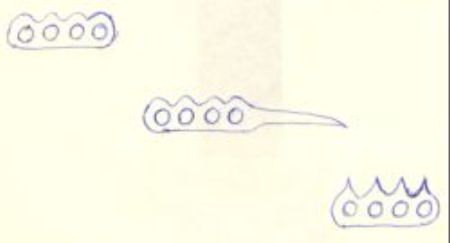 |
|
CITY OF EDMONTON POLICE DEPARTMENT
MEMORANDUM FOR The INFORMATION AND GUIDANCE OF ALL RANKS
|
|
|
|
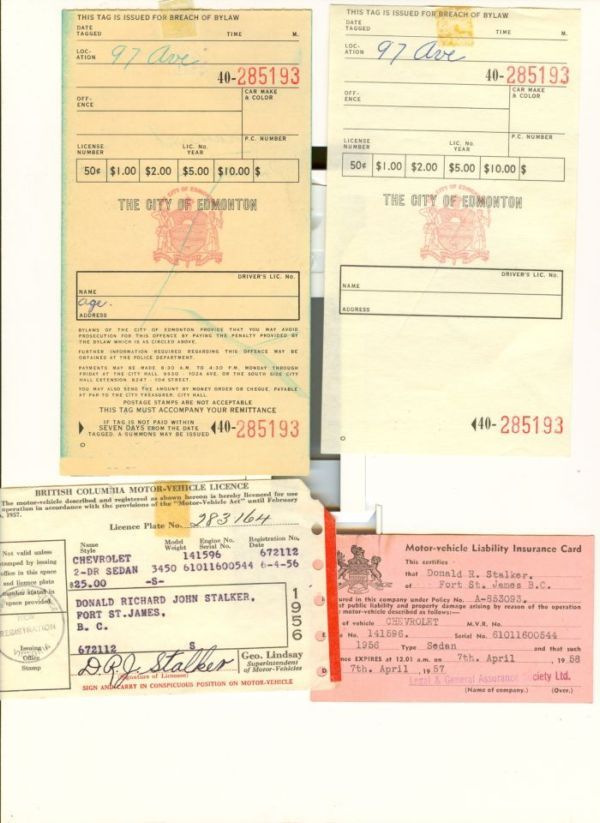 |
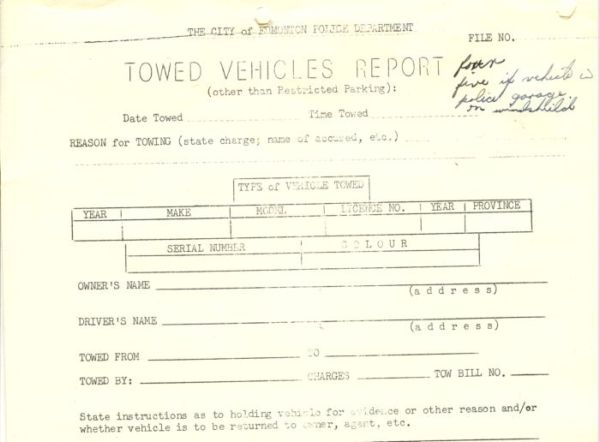 |
|
|
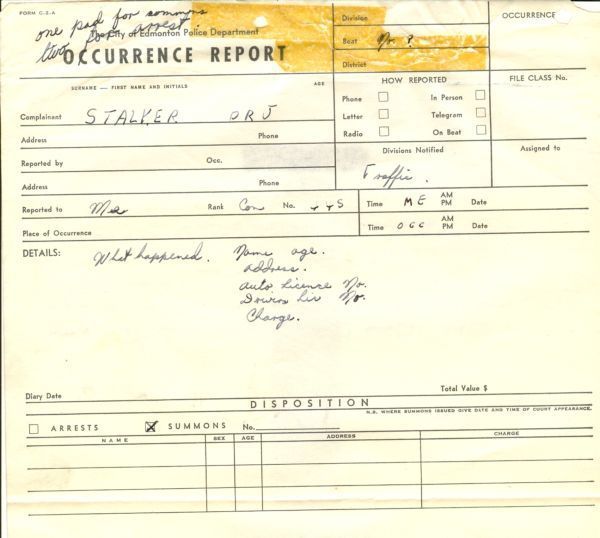 |
 |
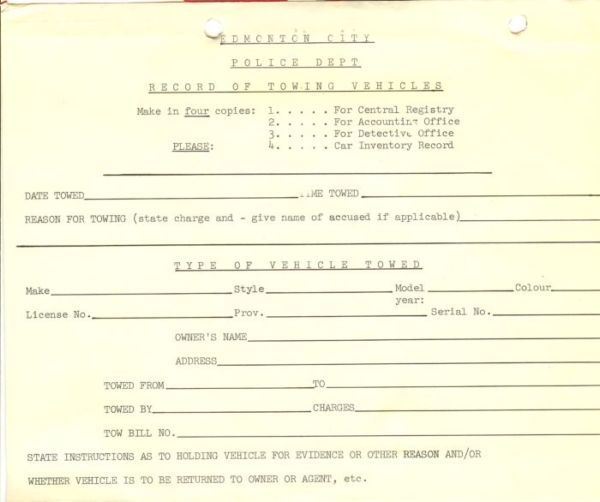 |
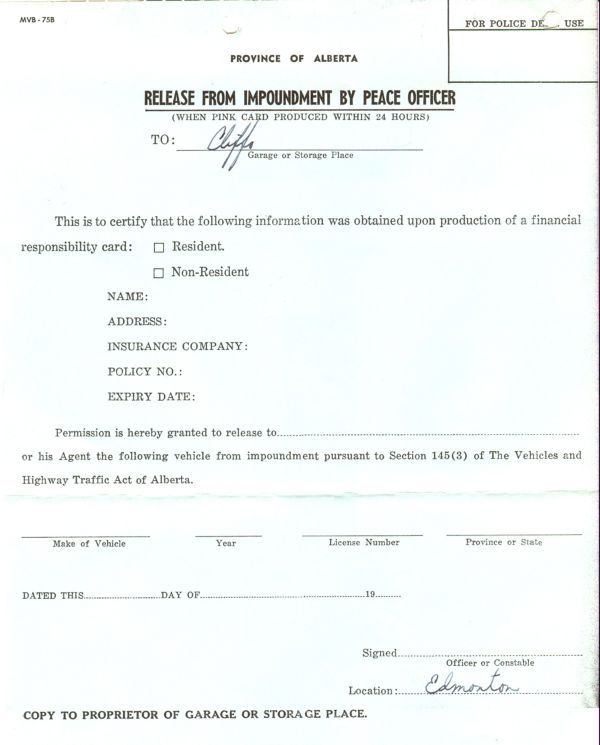 |
|
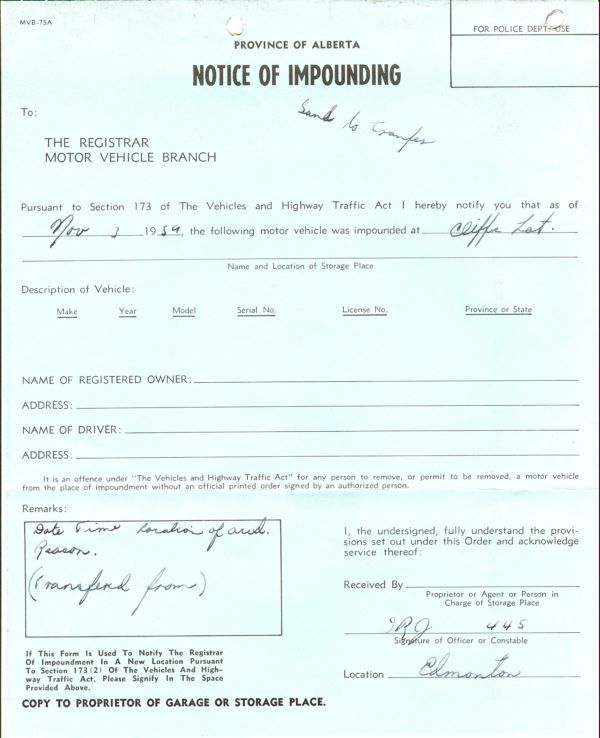 |
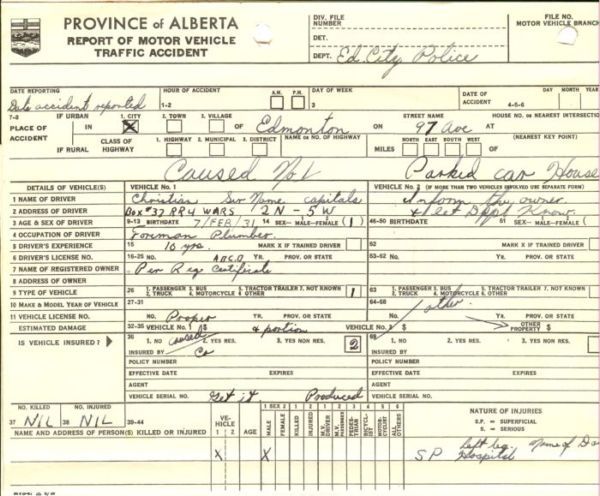 |
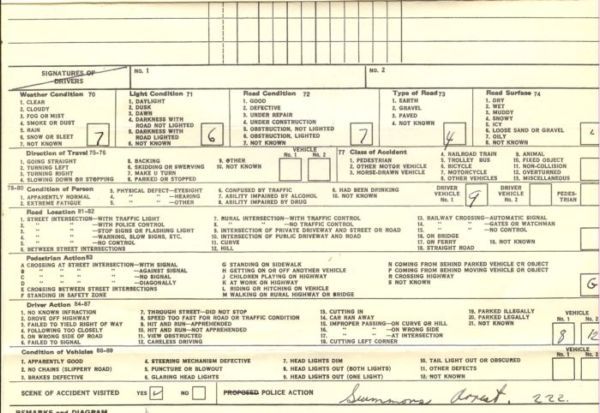 |
|
| FORMS FROM TRAFFIC | |
| Traffic Ticket | Tow forms [top] |
| Tow Form [bottom] | Occurrence Report [top] |
| Occurrence Report [bottom] | Towing Report [second] |
| Towing Report [bottom] | Release from Impoundment |
| Impoundment Form | MVB Report [top] |
| MVB Report [bottom] | MVB Report |
|
|
AUCTIONEER One who sells or offers for sale any real property. PAWNBROKER One who lends money on something deposited with him. RAG AND JUNK COLLECTOR One who buys and sells junk and rags. PREMISES Store, warehouse or place of business. SECOND HAND Articles that have been worn and used, bought and sold.
424 Auctioneer must keep records. 1. The name, address, physical description and the amount payed for the article. 2. The name, address, physical description and the amount the article was sold for. He must give the buyer a receipt. 444 Pawnbroker. 1. Must have large sign, name of firm and the pawnbroker's name. 457 Second-hand. 1. No Second-hand Dealer shall take good from anyone under the age of 16 years. 2. He must (not)take goods from anyone under the influence of alcohol. 3. He must not do business on holidays. 4. He must keep records. There are 24 second-hand dealers in Edmonton. There are 4 auctioneers. They are inspected daily. As soon as a conviction is made the goods are returned to the owner. If no arrest is made they are kept for three months. Then there is a hearing. The owner and dealer are present. Arrangement for the return of the goods are made. If positive identification can be made the owner takes the goods. If positive identification cannot be made the dealer gets the goods.
|
| FORMS RELATED TO STOLEN VEHICLES & BICYCLES. | |
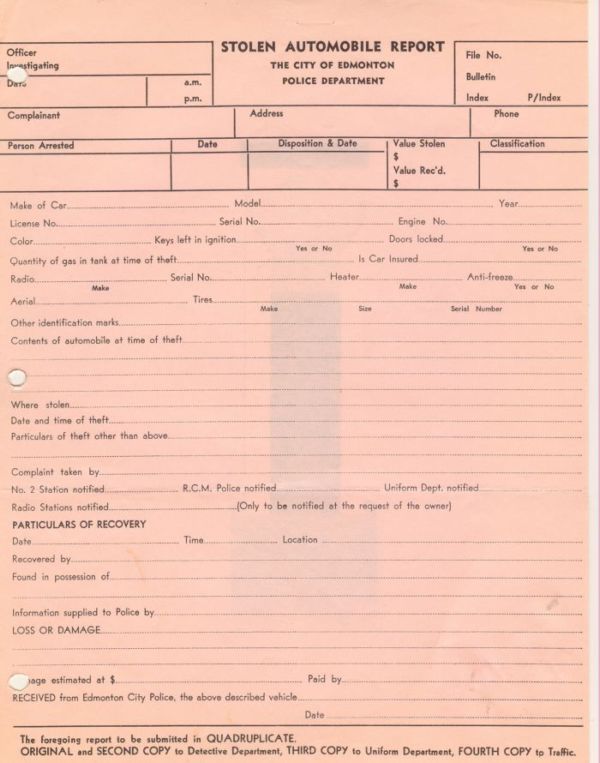 |
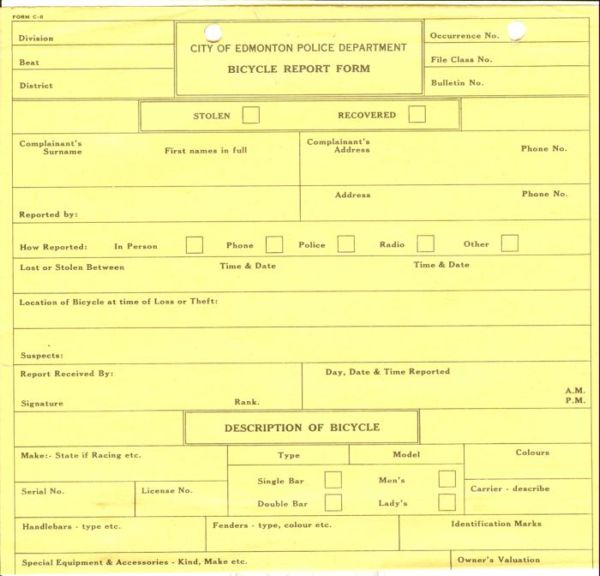 |
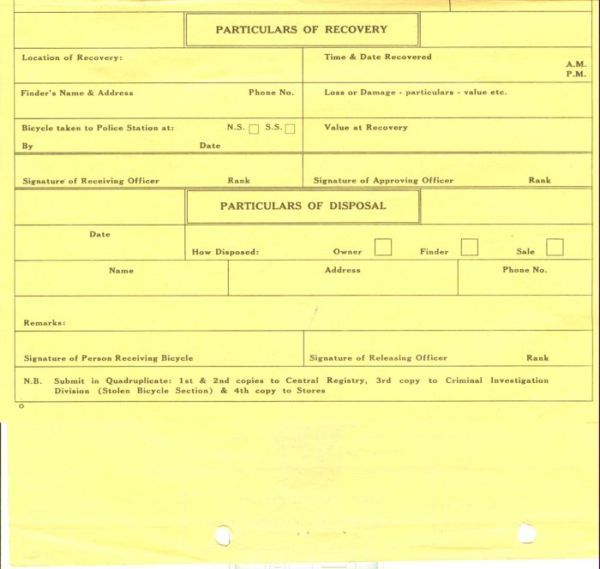 |
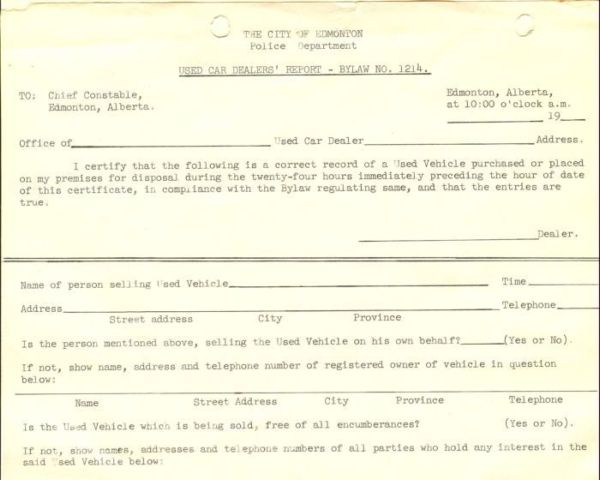 |
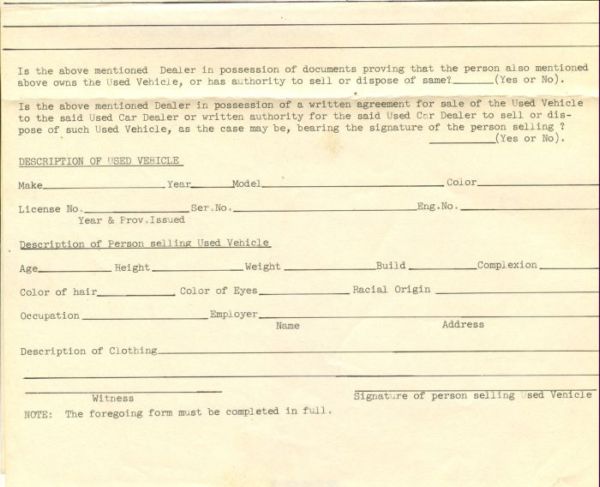 |
Reports reading left to right, row by row. Stolen Auto Report Stloen Bicyclew Report [topt} Stoen Bicycle Report [bottom] Used Car Dealers Report Used Car Dealers Report [bottom] |
 |
Secondhand Dealers Report |
|
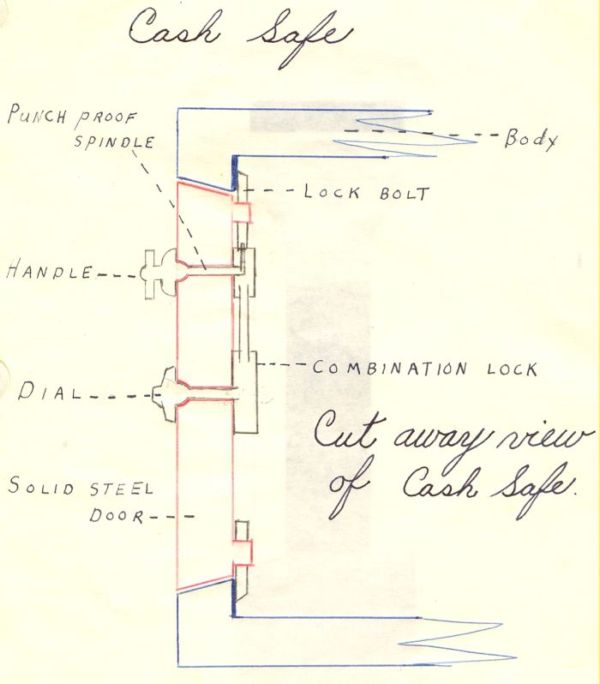 |
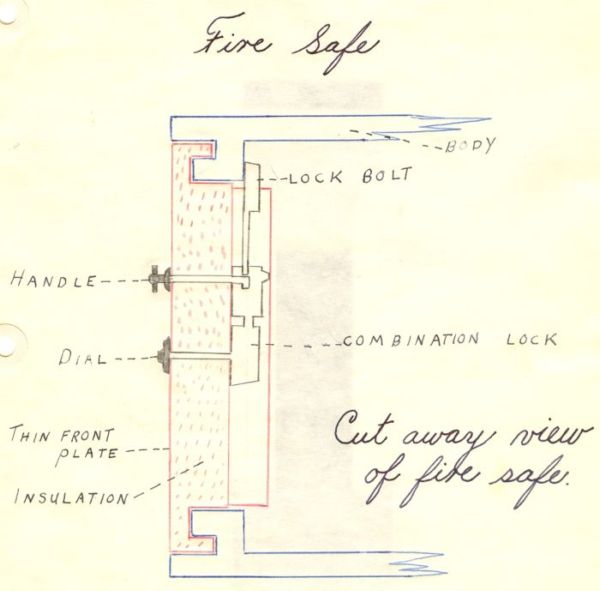 |
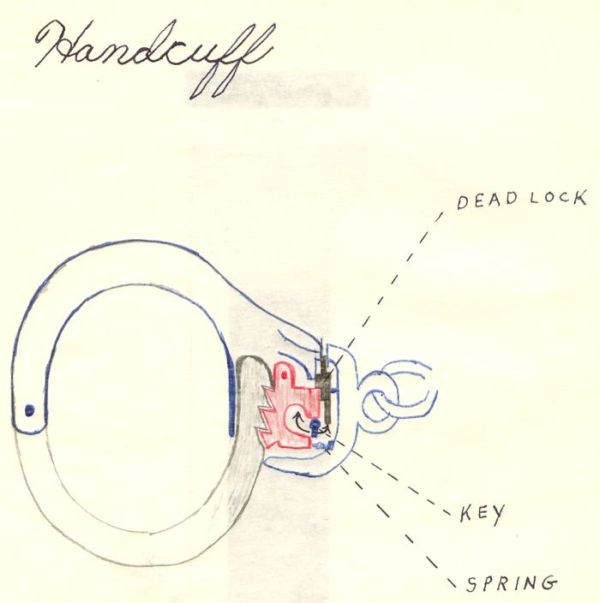 |
Left....CASH SAFE Right... FIRE SAFE Bottom left.... HANDCUFF
|
|
|
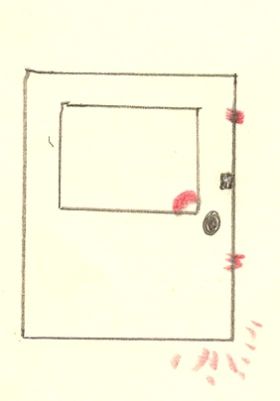 |
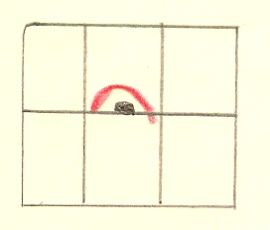 |
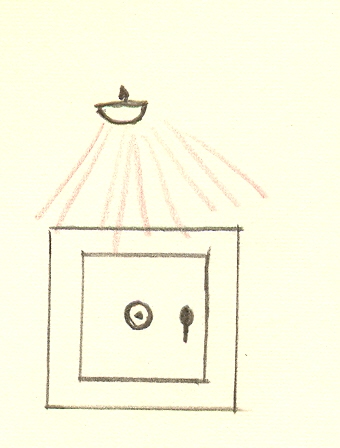 |
INSECURE PREMISES LEFT TOP-ENTRY POINTS RIGHT TOP-ENTRY POINTS BELOW LEFT-EVERYTHING OK.
|
|
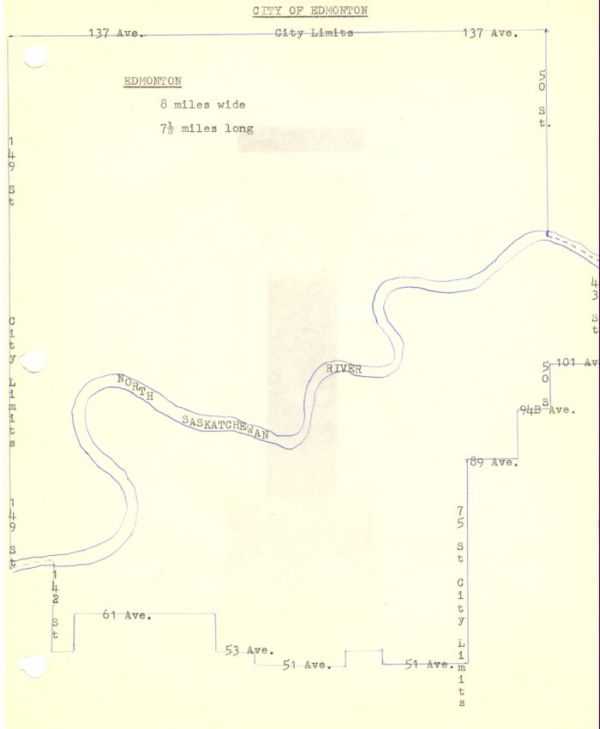 |
|
| PROPERTY REPORT [FRONT AND BACK] |
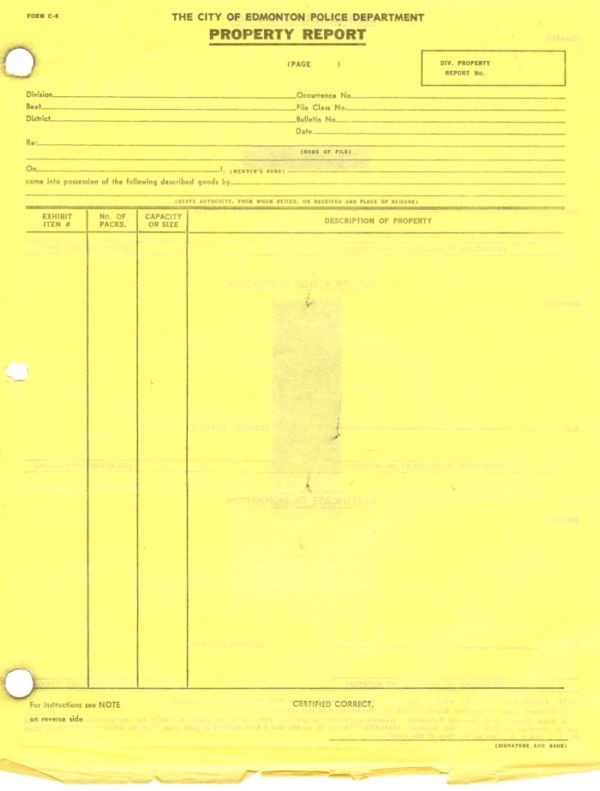 |
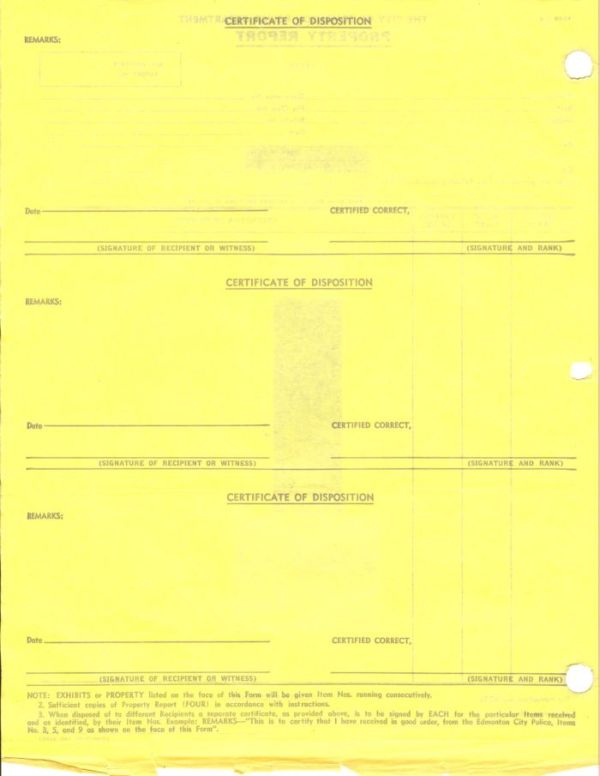 |
|
|
|
|
|
|
|
|
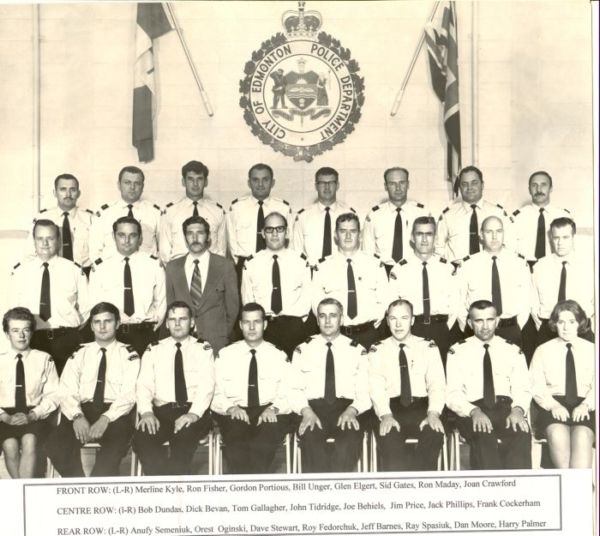 |
|
Several Class 10 members took part in this refresher course...Anufy S. Rae S, Dinty M, John T & Sid G. |
|
John Tidridge, who put together this account and the account of the Reunion is shown on 'his' Harley Davidson... he thoroughly enjoyed his ten years (1961`-1971) in the Traffic Division, as it was then known. |
|
CLASS: 10 HOW WE WERE AND WHERE WE ARE HEADING.....
RECRUIT CLASS 10: 25 MEMBERS
Those who finished their police career with Edmonton: 11 [44%]
Those who died while a member
?Those whose careers happened away from the Edmonton Police Service: 13 [52%]
Total members who have died [56%]
Only one member unaccounted for
Those attending 50th Anniversary
Those attending 55th Anniversary
60th Anniversary: Did not take place due to lack of interest, or not interested, or, time we gave up on this
. |
|
||||||||||||||||||||||||||||||||||||||||||||||||||||
|
John Tidridge |
|
|
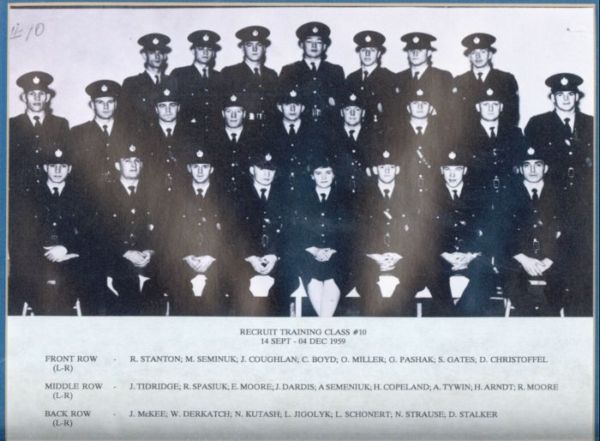
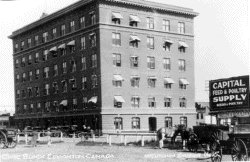
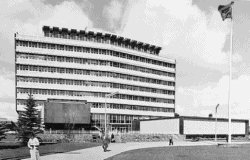 444 Bob Stanton, 445 Don Stalker, 446 John Tidridge, 447 Ray Spasiuk, 448 Sid Gates, 449 Bob Boyd, 450 Tony Tywin, 451 Wally Derkatch, 452 Danny Moore, 453 Herb Arndt, 454 Norm. Strause, 455 John McKee, 456 Jim Coughlan, 457 Harold Copeland, 458 Glen Pashak, 459 Larry Schonert, 460 Larry Jigolyk, 461 Anufy Semeniuk.
444 Bob Stanton, 445 Don Stalker, 446 John Tidridge, 447 Ray Spasiuk, 448 Sid Gates, 449 Bob Boyd, 450 Tony Tywin, 451 Wally Derkatch, 452 Danny Moore, 453 Herb Arndt, 454 Norm. Strause, 455 John McKee, 456 Jim Coughlan, 457 Harold Copeland, 458 Glen Pashak, 459 Larry Schonert, 460 Larry Jigolyk, 461 Anufy Semeniuk.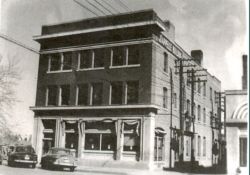 Fifty years later it is difficult to remember everything in sequence... however, at some time the class finished up in
Fifty years later it is difficult to remember everything in sequence... however, at some time the class finished up in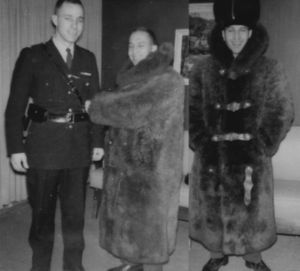 Constable Robert Stanton, #444, 1959, Edmonton, The Buffalo Coat was standard winter issue. The buffalo coat was not unique to the Edmonton Police Service, it was probably worn by most Prairie services and most certainly the RCMP. What would be unique about wearing the coat was if it actually fitted the officer who wore it. It had to fit or to wear it was a nightmare. It was cumbersome, but...it was warm and with the ear flaps of the fur cap pulled down, the collar up and adequate footwear, it was a shield against the worse possible weather. and, speaking of cold weather, one quickly learned not to put the call box key any where near one' s lips or tongue...
Constable Robert Stanton, #444, 1959, Edmonton, The Buffalo Coat was standard winter issue. The buffalo coat was not unique to the Edmonton Police Service, it was probably worn by most Prairie services and most certainly the RCMP. What would be unique about wearing the coat was if it actually fitted the officer who wore it. It had to fit or to wear it was a nightmare. It was cumbersome, but...it was warm and with the ear flaps of the fur cap pulled down, the collar up and adequate footwear, it was a shield against the worse possible weather. and, speaking of cold weather, one quickly learned not to put the call box key any where near one' s lips or tongue...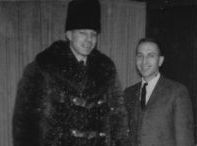 the sergeants knew nothing of this trick... ah!
the sergeants knew nothing of this trick... ah!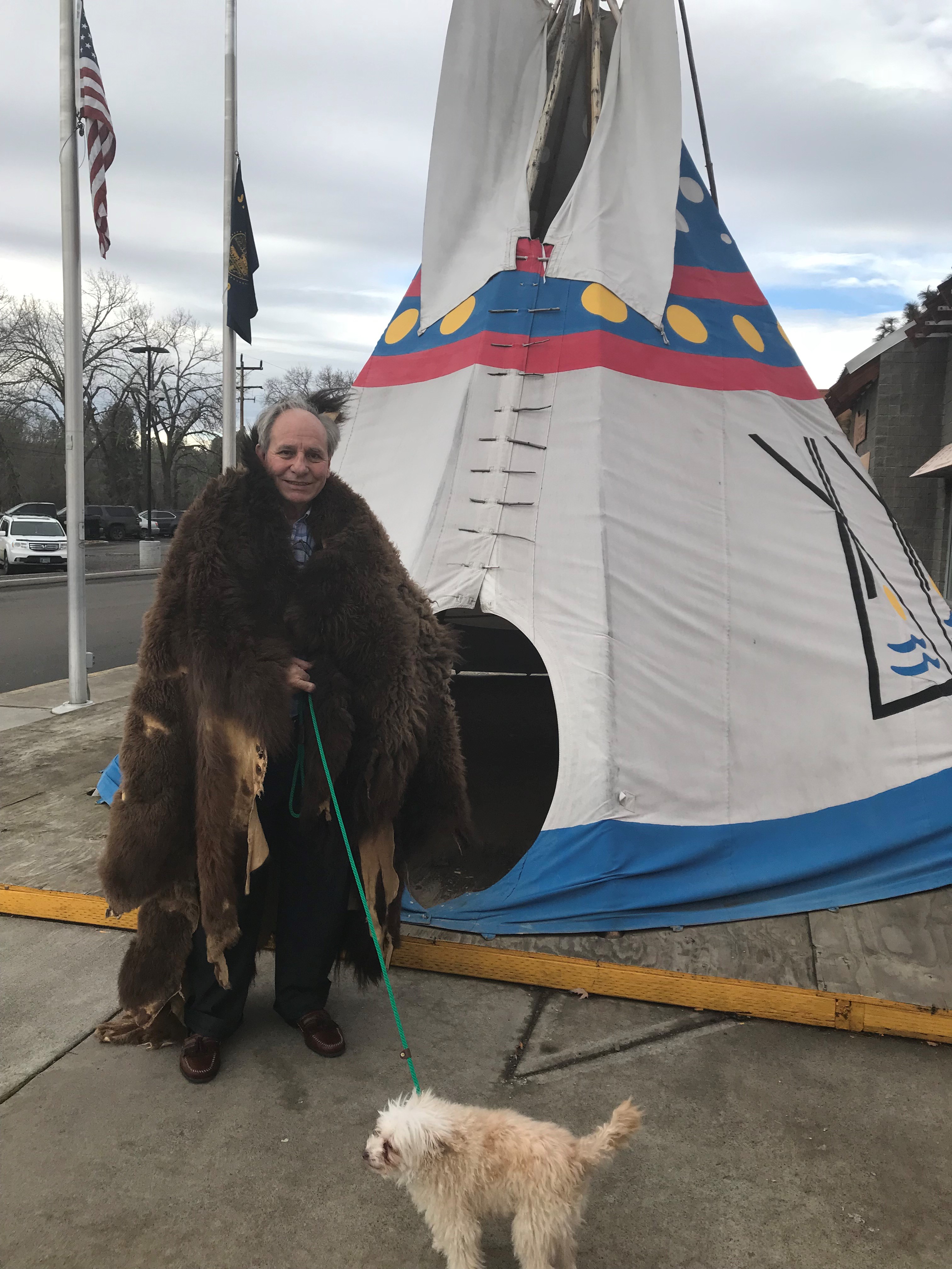
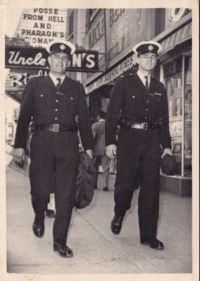 Seeing one or two or three or even four police officers striding down a city street (most likely Jasper Avenue, as shown in this picture) would have been a familiar sight around 7.45h back in the fifties (and before that one would imagine. Officers would have perhaps meet, by design or accident, at certain locations and from there would head off toward the police station to end their shifts. We would march in step, apparently not required any longer... but it gave an appearance of cohesiveness, albeit a military one!
Seeing one or two or three or even four police officers striding down a city street (most likely Jasper Avenue, as shown in this picture) would have been a familiar sight around 7.45h back in the fifties (and before that one would imagine. Officers would have perhaps meet, by design or accident, at certain locations and from there would head off toward the police station to end their shifts. We would march in step, apparently not required any longer... but it gave an appearance of cohesiveness, albeit a military one!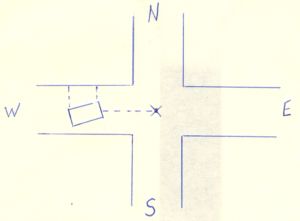

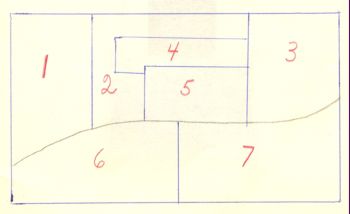
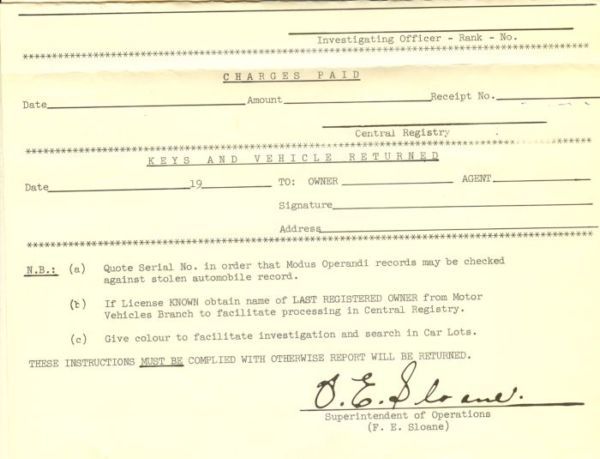
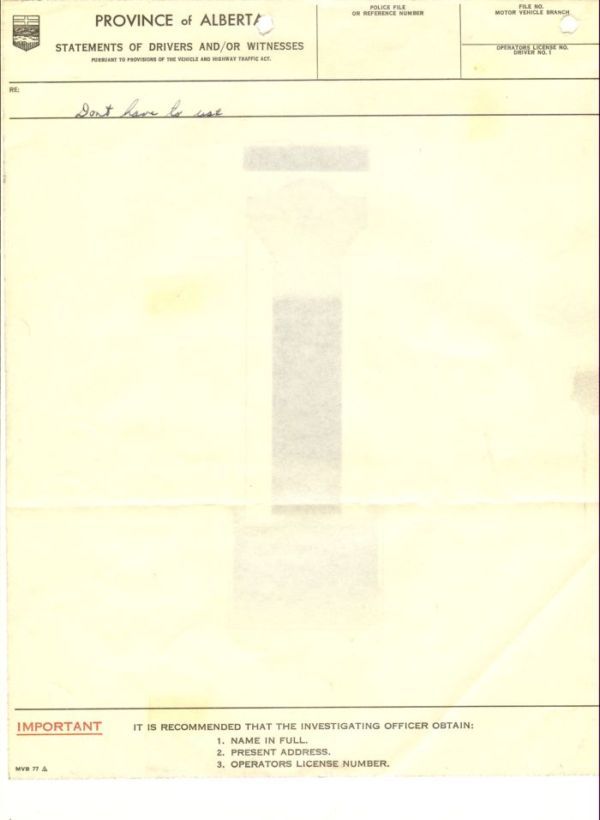
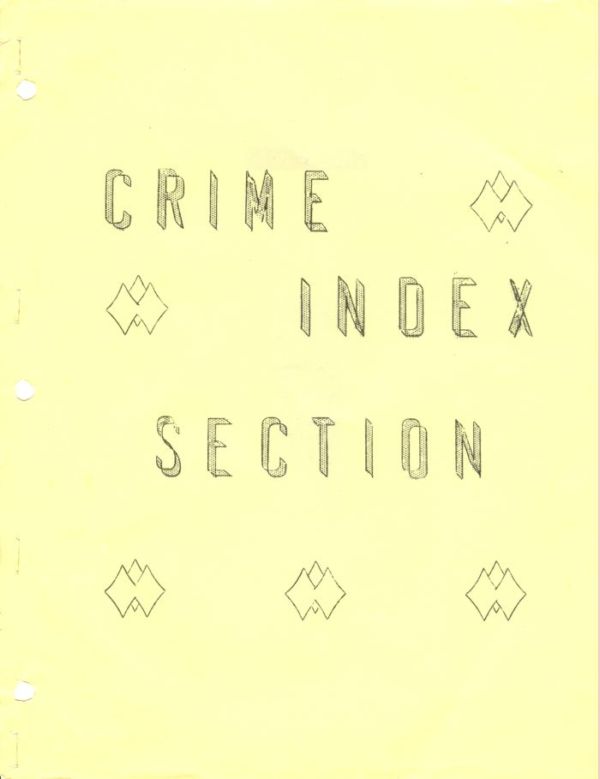
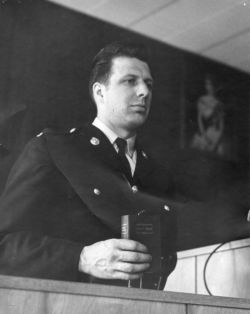 Larry Schonert (459) giving evidence. This is a 'posed' taking of the oath. The photograph was taken by Greg Mockford of the what was known then as the Identification (Ident) Section. The photograph was to be used in the Police Expo.
Larry Schonert (459) giving evidence. This is a 'posed' taking of the oath. The photograph was taken by Greg Mockford of the what was known then as the Identification (Ident) Section. The photograph was to be used in the Police Expo.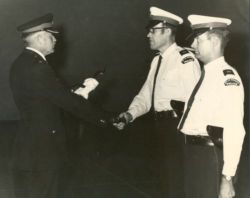 John Tidridge and Terry Adams are presented awards at the end of a refresher course for constables. Presenter is the late Inspector Bill Stewart.
John Tidridge and Terry Adams are presented awards at the end of a refresher course for constables. Presenter is the late Inspector Bill Stewart.